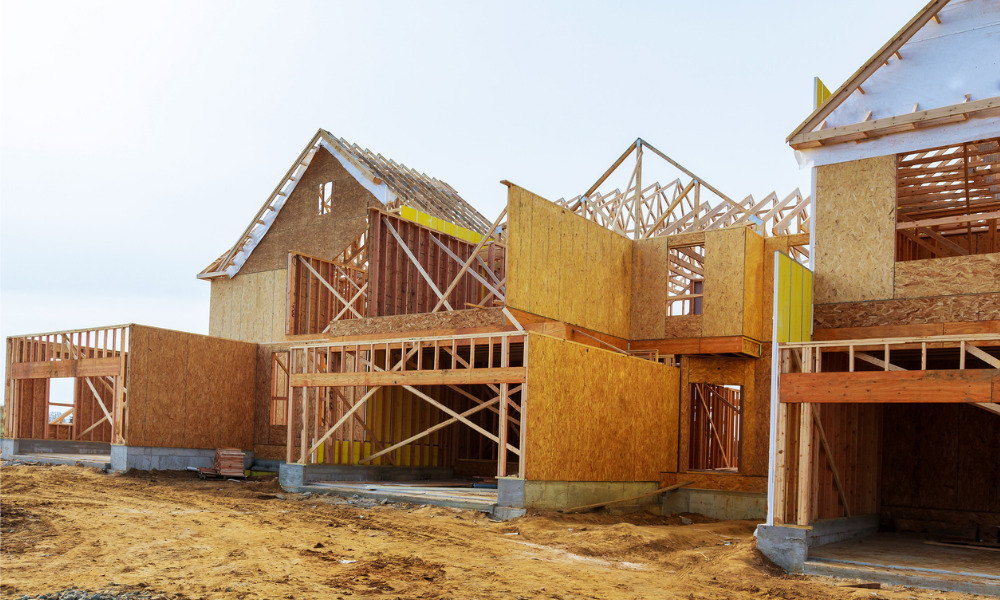Labour shortages, high material costs and the spectre of soaring energy prices present ongoing challenges

Construction output increased slightly in August for the second consecutive month thanks to new building projects, according to the latest data from the Office for National Statistics (ONS).
Despite a shrinking economy (it was down 0.3% during the same period), monthly construction output rose by 0.4%, the second highest month in level terms after May, with £15.03 million, which was also the highest since records began in January 2010.
The ONS attributed the increase solely to the rise in new work projects (1.9%), as repair and maintenance fell by 2% on the month.
At sector level, the main contributors were in infrastructure as well as private industrial and housing projects, which increased by 5.3%, 4.3% and 1.7%, respectively.
Read more: Home building requires radical rethink in UK, says housing expert
Construction output in August was also 3.2% (£461 million) above the February 2020 pre-COVID level.
Although new work was 0.7% below February 2020 level, repair and maintenance work increased substantially and was 10.6% (£530 million) above the pre-COVID benchmark.
On the downside, the report highlighted long-standing challenges, such as the rising cost of products, mostly concrete, plaster, bricks and gravel, as well as labour shortages and recruiting difficulties facing many companies.
Commenting on the figures, Beard Construction finance director Fraser Johns said it was “encouraging” to see two consecutive months of growth during July and August, “however small” and in an increasingly challenging economy.
“The fact that the growth came from an increase in new work is a reminder that developers still have the confidence to commit to new schemes. This growth is sustainable if the sector continues to price jobs fairly and accurately, and building in price fluctuations where necessary, rather than passing the risk down the supply chain,” he said.
“However, these positive trends could well be interrupted by the current volatility and uncertainty overhanging the wider UK economy. Material inflation seems to be calming down compared to earlier in the year, but the rising cost of energy remains a concern,” he concluded.
Richard Beresford, chief executive of the National Federation of Builders (NFB) told Mortgage Introducer: “Industry growth is positive news, especially for Prime Minister Truss, who will need a strong construction sector to meet her growth ambitions.”
But he also pointed out that the construction sector was still catching up with the increased homeowner workloads and project delays caused by the pandemic lockdowns.
He went on: “Retrofit and new housing demand remains strong, and both the private and public sector continues to invest in capital projects. However, if the government doesn’t act, the energy crisis, material prices spikes, increased taxation, higher lending rates and over regulation could see that growth drop off, as clients and industry struggle to afford, start or complete works.”
Quoted in the Construction Enquirer, Mark Robinson, the group chief executive at procurement group Scape, also warned that the sector was poised “for a challenging winter” due to rising inflation, despite the Chancellor’s welcome energy support package.
He also stressed that continued investment in public sector building projects this winter “will be vital for the well-being of the construction industry – and the country – as a whole”, claiming that the sector contributed in excess of £1 billion of social value last year.
Clive Docwra, managing director of property and construction consultancy McBains, said the moderate growth seen in August was evidence that the construction industry was “holding firm” during a difficult period.
However, he added that “there are still bumps in the road” that needed to be negotiated.
“Material price inflation may be starting to fall, according to recent figures and from what our clients are telling us, but the cost of construction remains high, and further volatility over the medium term can be expected as factors such as Russia’s invasion of Ukraine and the energy crisis bites harder.
Read more: Mortgage experts react to new housing secretary
“And despite the increase seen in private investment, the risk of recession and high interest rates means some investors are still holding the pause button until the economic picture becomes much clearer.”
According to the previous Johnson administration, 300,000 homes a year would be needed by the mid-2020s to solve the housing shortage backlog, although the new government has all but given up on the idea of meeting this target.
In any case, an estimate commissioned by the National Housing Federation and Crisis from Heriot-Watt University, placed the figure substantially higher at 340,000 in England alone; 145,000 of which should be classed as affordable and built every year until 2031.
Housing shortage estimates were based on official data taken from 2015/16, but the latest figures show that only 243,000 homes were built in 2019/20, falling to 216,000 during 2020/21, a period dominated by COVID restrictions.



